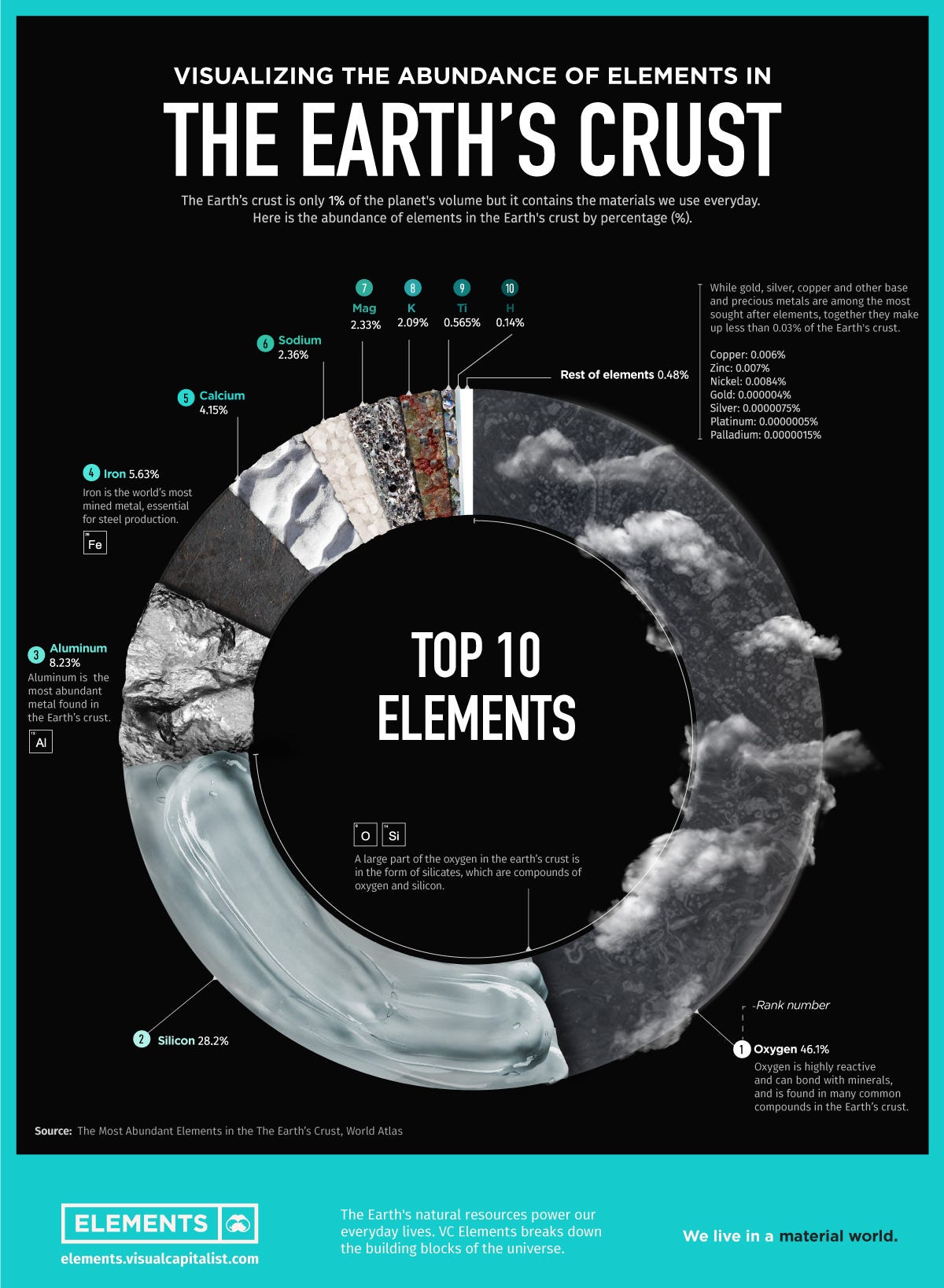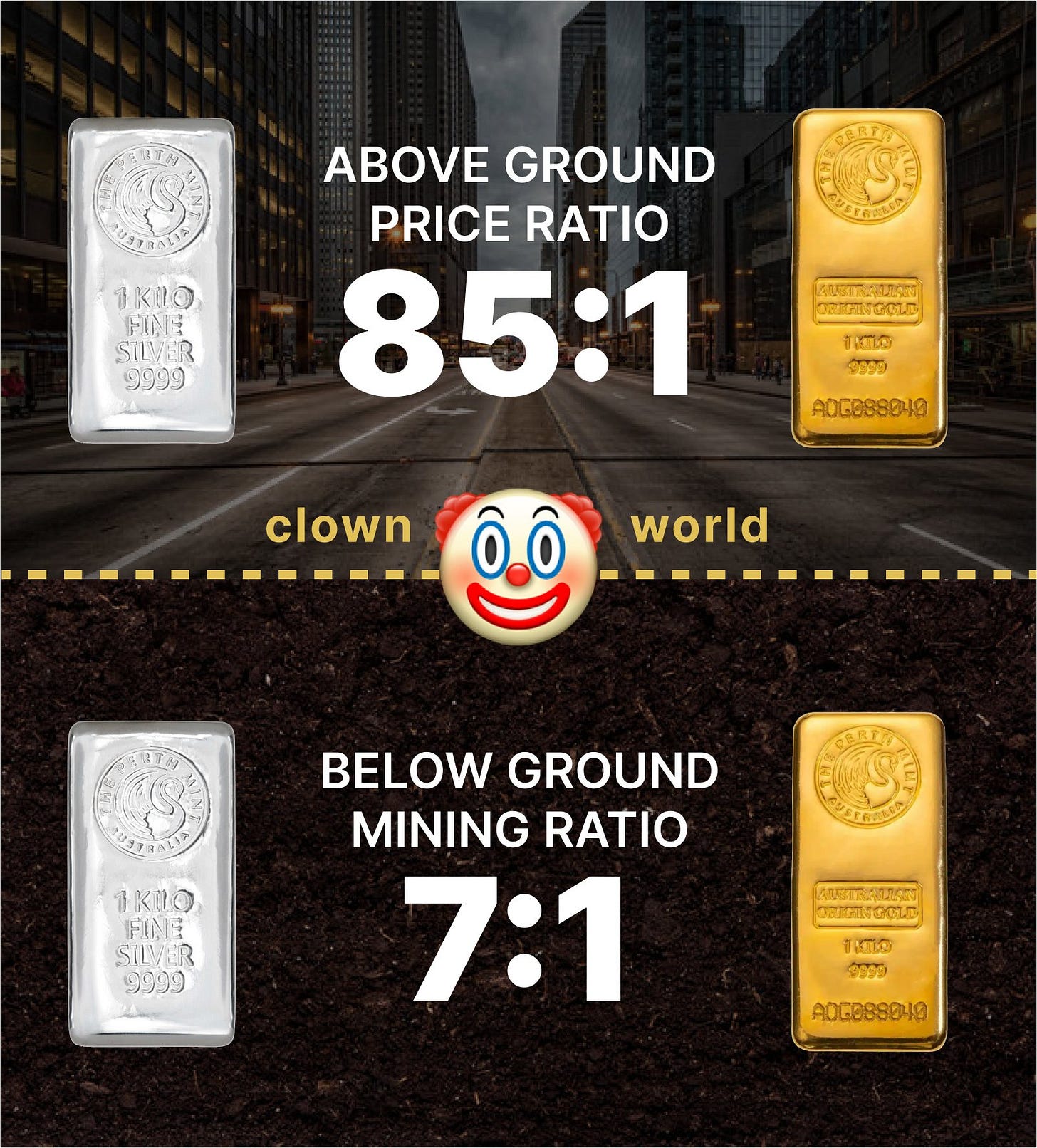85% of Silver Mined Since the Industrial Revolution: The Vanishing Resource
The Sensational Silver Vanishing Act. And You Can Profit from it.
I remember visiting with my grandmother Myrtle Little and assisting her as she moved from independent living to assisted living.
Despite being born into a family of poor alfalfa farmers, my grandmother Myrtle Little was a paragon of discipline. She was one of eight siblings, her parents being Norwegian immigrants who had seized the opportunity of Federal homesteading initiatives for Western States.
She had mentioned that they were so poor that during the winters, she and her sisters would be forced to travel by freight car to Minnesota to live with extended family because the nuclear family in North Dakota didn't have enough resources for the entire family. This was a typical migration pattern during the early stages of homesteading.
Her resourcefulness in such difficult circumstances was truly admirable.
She told me that during her lifetime, she had seen everything, including the transition from wood burning to coal-burning power, horse and buggy to model T, the emergence of passenger trains, the invention of the airplane, the telegraph, the telephone, rockets, calculators, and computers.
Her adaptability was truly impressive and she wanted to instill a warning to me that life is full of unexpected adoptions that will lead to many "hard to believe" evolutions (many positive but also many life-altering disruptions)
After she died and we packed up her home, all her modest belongings were stored in their original boxes with instruction manuals intact; everything looked pristine because she had also lived through eras like the great depression and understood the virtue of taking care of material blessings.
Gradually then Suddenly.
Before the Industrial Revolution, Silver was primarily used as a monetary metal and rarely as an industrial metal.
There was little commercial use (but some were used in a variety of products such as silverware, jewelry, plates, and chalices.
In a mere 200 years, approximately 85% of all industrial mineral resources, including metals like silver, copper, tin, zinc, and nickel, and fossil fuels like oil and coal, have been consumed, highlighting the rapid pace of resource depletion.
This isn't some grand revelation, but it's a stark reality. The Industrial Revolution, a blink of an eye in the grand timeline of human history, has led to the alarming and rapid consumption of 85% of all industrial mineral resources, a staggering data point about scarcity, and those that recognize this supply deficit will profit from once in a generation wealth opportunity
Accelerated Technological Advancements
The rapid pace of technological innovation in the past 200 years, particularly in the fields of electricity, electronics, and telecommunications, has led to an even more intense demand for industrial minerals. The development of technologies like smartphones, computers, and the internet has required vast amounts of rare earth elements and other minerals.
Warfare and Military Industrial Complex
The 20th century saw two World Wars and numerous other conflicts, leading to unprecedented military industrialization. This has significantly increased the consumption of metals and other resources for weaponry, vehicles, and infrastructure.
Aerospace and Space Exploration
The development of the aerospace industry and space exploration programs has created new demands for specialized metals and alloys, further accelerating resource consumption.
Urbanization and Infrastructure Development
The massive shift towards urban living has necessitated the construction of extensive infrastructure networks, including buildings, roads, bridges, and utilities, all of which require substantial amounts of industrial minerals.
Global Modernization
As developing countries rapidly industrialize and modernize, their resource consumption has skyrocketed. Countries like China and India have seen exponential growth in their use of industrial minerals in recent decades.
Population Explosion
The world population has grown from about 1 billion in 1800 to nearly 8 billion today, with the majority of this growth occurring in the last century. This population explosion has led to a corresponding increase in resource demand for housing, transportation, and consumer goods.
Energy Transition
The ongoing transition to renewable energy sources, while beneficial for the environment, has created new demands for certain minerals used in solar panels, wind turbines, and battery technologies.
Given these additional factors and the intensification of resource use in various sectors, it's plausible that an even higher percentage - 85% - of all industrial mineral resources have been consumed in just the past two centuries.
Silver Drains Due to Electricity
Silver and Copper the top 2 Metals for conducting electricity
The War of the Currents: Edison vs. Tesla
The late 19th century marked the "War of the Currents," a conflict between Thomas Edison, who promoted direct current (DC), and Nikola Tesla, who advocated for alternating current (AC). AC eventually became the standard due to its efficiency over long distances.
Early 20th Century: Electrification and Home Appliances
1900s-1910s: AC's adoption led to widespread electrification, introducing electric lighting and early home appliances like irons and toasters.
1920s: Electricity reached more homes, with refrigerators and vacuum cleaners becoming common.
Mid 20th Century: Industrial and Technological Expansion
1930s-1940s: Electricity revolutionized manufacturing with electric motors. WWII accelerated advancements in radar and communications.
1950s: The post-war era saw televisions and household appliances become widespread, increasing electricity demand.
Late 20th Century: Computing and Telecommunications
1960s-1970s: The rise of computers and telecommunications transformed industries, with mainframes and early personal computers becoming prevalent.
1980s: Personal computing became mainstream, and mobile phones began to emerge, expanding telecommunications.
Early 21st Century: Renewable Energy and Mobile Technology
1990s-2000s: A shift towards renewable energy sources like wind and solar occurred. Mobile phones became ubiquitous, and the internet transformed communication.
2010s: Smartphones and 4G networks revolutionized connectivity. Smart technology integration increased electricity consumption.
Recent Developments: AI, Bitcoin Mining, and 5G
2020s: The rollout of 5G networks enhanced connectivity, enabling advancements in IoT and autonomous vehicles. AI's energy demands surged, with data centers consuming significant power for training and deploying large language models like GPT-3. AI's energy consumption is projected to increase dramatically, potentially becoming a major energy consumer.
Bitcoin Mining: Bitcoin mining has also become a significant electricity consumer, with its energy-intensive process contributing to global electricity demand. The decentralized nature of mining operations and the computational power required for blockchain validation have led to increased electricity usage.
The continuous evolution of technology has been driven by electricity, from the early days of AC/DC battles to the current challenges of AI and cryptocurrency mining. These advancements have shaped industries and daily life, highlighting the critical role of electricity in technological progress.
According to this report by visualcapitalist.com
Gold (represented by .000004% value) is about 4.33 times larger than .00000075%
Thus there is 433% More Gold than Silver (under ground)
end of section
Proof below that bankers manipulate the price of Silver (but they are losing control of their thievery / trickery)
30 second slideshow , smash the button below







